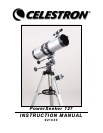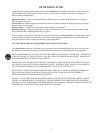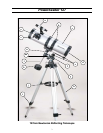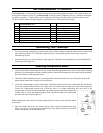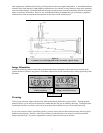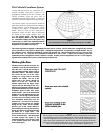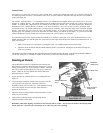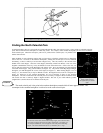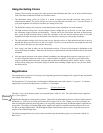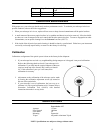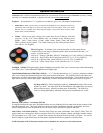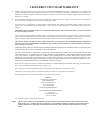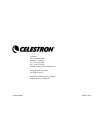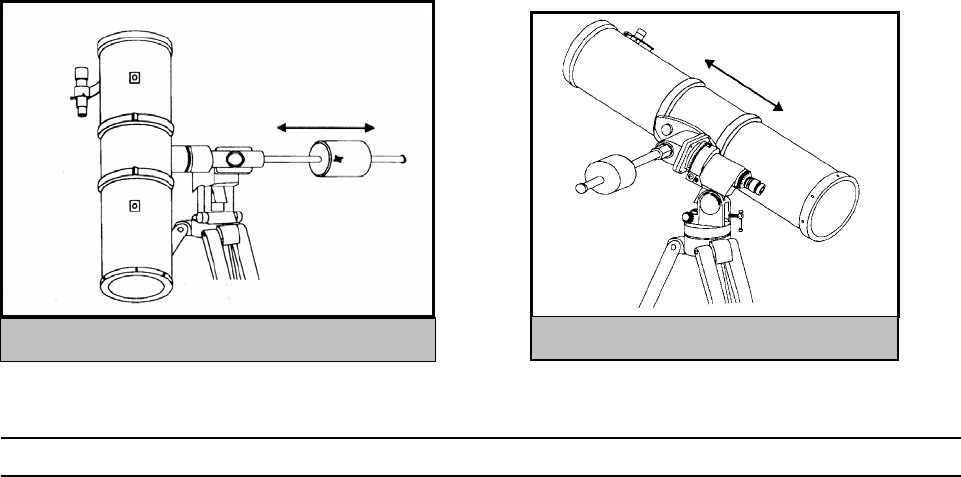
2. To move the telescope in right ascension (east/west) there are two options. For large and quick movements,
loosen the right ascension knob when moving the telescope and then tighten the knob when you are near the
position you want. For very small movements and fine adjustments, turn the right ascension cable. Unlike
the declination cable, the right ascension cable has 360˚ of continuous motion.
Balancing the Telescope in Right Ascension (R.A.):
The telescope should be properly balanced in order for it to move smoothly in both axes. Proper balance is essential if
using an optional motor drive for accurate tracking.
1. To balance the right ascension axis, move the counterweight shaft so it is parallel (horizontal) to the ground.
(See figure 3). Slowly release the right ascension knob and see if the optical tube moves. If the optical tube
moves, then slide the counterweight up or down the counterweight shaft until the optical tube remains
stationary in the parallel position to the ground. When this happens, make sure the counterweight lock is
tight.
Balancing the Telescope in Declination (DEC):
The telescope should also be balanced on the declination axis to prevent any sudden motions when the DEC clamp is
released. To balance the telescope in DEC:
1. Release the R.A. clamp and rotate the telescope so that it is on one side of the mount (i.e., as described in the previous
section on balancing the telescope in R.A.).Lock the R.A. clamp to hold the telescope in place. Release the DEC
clamp and rotate the telescope until the tube is parallel to the ground (see figure 4). Release the tube —
GRADUALLY — to see which way it rotates around the declination axis. DO NOT LET GO OF THE
TELESCOPE TUBE COMPLETELY! Loosen the screws that hold the telescope tube inside the mounting rings
and slide the telescope tube either forwards or backwards until it remains stationary when the DEC clamp is released.
Tighten the tube ring screws firmly to hold the telescope in place.
Figure 4 - Balancing in Declination
Figure 3 - Balancing in R.A.
T
T
e
e
l
l
e
e
s
s
c
c
o
o
p
p
e
e
B
B
a
a
s
s
i
i
c
c
s
s
A telescope is an instrument that collects and focuses light. The nature of the optical design determines how the light
is focused. Some telescopes, known as refractors, use lenses. Other telescopes, known as reflectors, use mirrors. A
Newtonian reflector uses a single concave mirror as its primary. Light enters the tube traveling to the mirror at the
back end. There light is bent forward in the tube to a single point, its focal point. Since putting your head in front of
the telescope to look at the image with an eyepiece would keep the reflector from working, a flat mirror called a
diagonal intercepts the light and points it out the side of the tube at right angles to the tube. The eyepiece is placed
there for easy viewing.
Newtonian Reflector telescopes replace heavy lenses with mirrors to collect and focus the light, providing much more
light-gathering power for the dollar. Because the light path is intercepted and reflected out to the side, you can have
6



